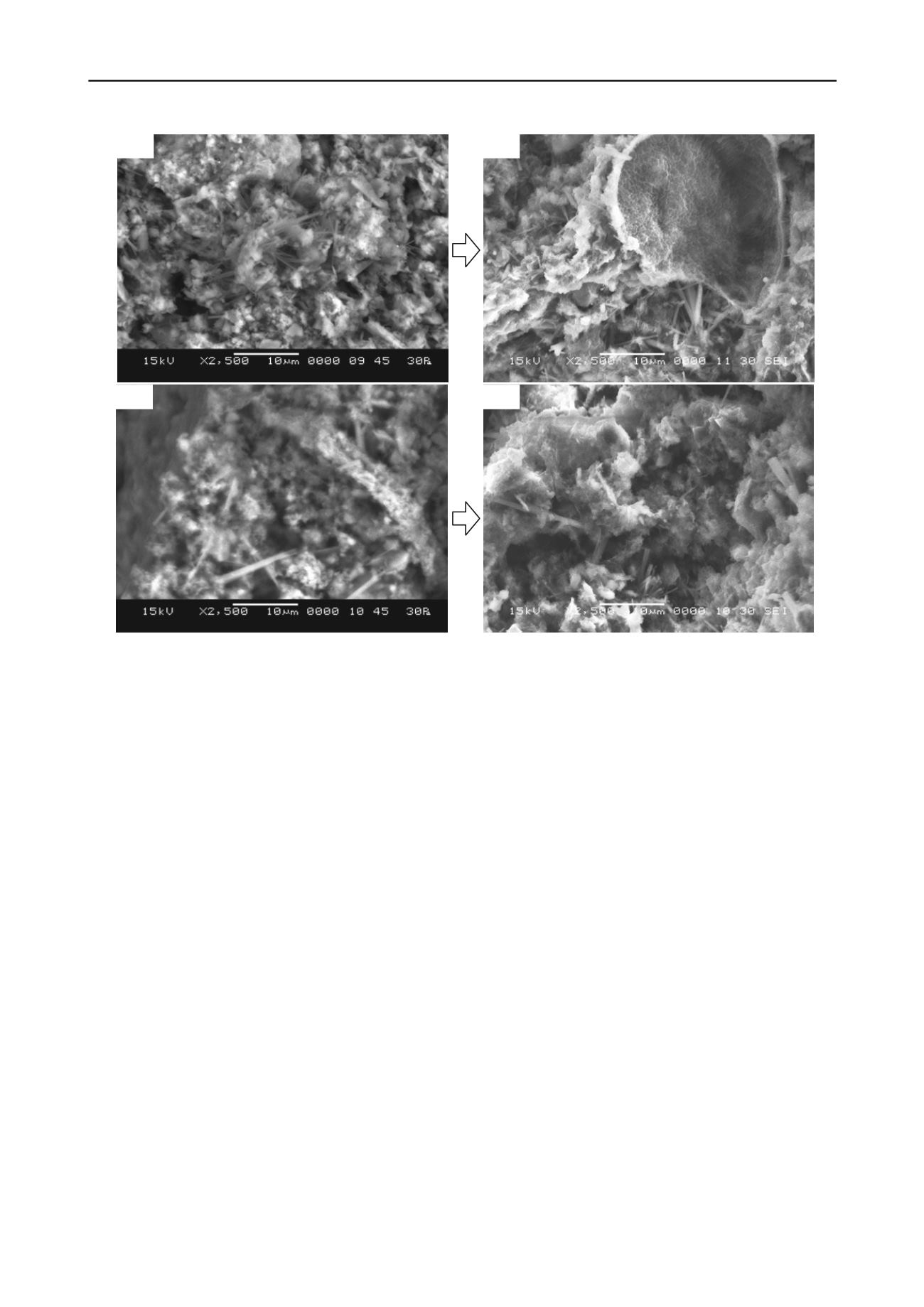
3230
Proceedings of the 18
th
International Conference on Soil Mechanics and Geotechnical Engineering, Paris 2013
2b
2a
1b
1a
Photo 1. SEM observation of the Tokyo Bay A and B. Curing period of the Tokyo Bay A are 3 (1a) and 182 (1b) days, and curing period of the
Tokyo Bay B are 28 (2a) and 182 (2b) days.
5 ACKNOWLEDGEMENTS
4 CONCLUSIONS
In this study the unconfined compression test, the BE test, and
observations of the internal structure using an SEM were
conducted on SGM specimens prepared with six different types
of source soil to examine how different source soils would
impact the strength development of SGM. The findings are
summarized as follows:
The authors thank Prof. Satoru Shibuya, Kobe University, Japan
and Prof. Satoshi Yamashita, Kitami Institute of Technology,
Japan for help to prepare the soil samples.
6 REFERENCES
It was inferred that while the strength and stiffness of the
SGM specimens increased with the elapse of curing days,
there is a very large variation in their actual levels due to the
mineral components and the constituents of pore water
contained in the source soil used. In addition, it became
clear that the SGM strength cannot be estimated from the
flow values of the specimens.
Kataoka, S., Kawaguchi, T., Horita, T., Tanaka, M., Sakaiya, T. and
Shibuya, S. 2011. Unconfined compression strength and elastic
shear modulus of air-form treated lightweight soil.
Proc. of the 5
th
International Symposium on Deformation Characteristics of
Geomaterials,
2, 682-686.
In SGMs with an approximately equal amount of cement
additive and comparable target wet density, the strength and
stiffness have a linear relationship as is the case in other
cement-treated soil, and their slopes are approximately the
same regardless of the soil type.
Kawaguchi, T., Yamashita, S., Kataoka, S., Shibuya, S. and Kawajiri, S.
2008. Inherent and induced anisotropy of three natural sedimentary
clays reflecting on the elastic shear modulus.
Proc. of the 4
th
International Symposium on Deformation Characteristics of
Geomaterials,
1, 575-579.
The slope obtained from
G
hh
and
G
vh
is characterized by an
approximately 1:1 relationship, showing that the air foam in
the specimens makes SGM a very isotropic material in
terms of stiffness.
Nagatome, T., Mitarai, Y., Yamatoya, R., Kotou, T. and Noguchi, T.
2010. Unprecedented large scale of rapidly construction work of
light weight soil with air form for Haneda D-runway Construction
Project (Part 1: Validation of field mixing condition).
The 45
th
Annual Conference of JGS,
2093-2094. (in Japanese)
Seng, S. and Tanaka, H. 2008. Properties of cement-treated soils during
initial curing stages.
Soils and Foundations,
51 (5), 575-579.
The observations of the internal structure of SGM using the
SEM on the predetermined curing days suggested the
possibility that the increase, growth, and bonding of needle-
like ettringite crystals, formed by the hydration process of
the cement, were a major factor contributing to the
development of the strength and stiffness of the SGM
specimens.
Sibuya, S. Mitachi, T. and Ozawa, H. 2001. Time/stress-history
dependency of deformation-strength characteristics of cement-
mixed sand.
Journal of JSCE,
687 (III-56), 249-257. (in Japanese)
Tuchida, T., Okumura, T., Takeuchi, D. and Kishida, T. 1996.
Development of light-weight fill from dredging.
Proc. of the 2
nd
International Congress on Environmental Geotechnics,
1, 415-420.
Watabe, Y., Itou, Y., Kang, M.S. and Tuchida, T. 2004. One-
dimensional compression of air-form treated lightweight geo-
material in microscopic point of view.
Soils and Foundations,
44
(6), 53-67.


